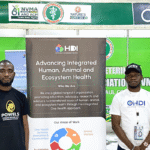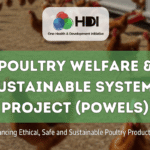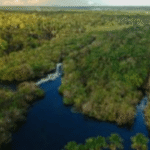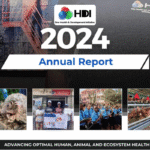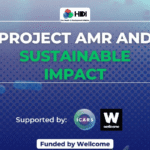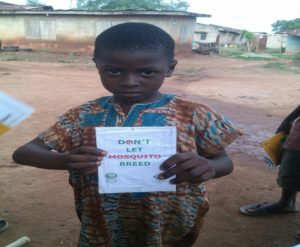
Written by Idris Otun and Kikiope Oluwarore
Though the world is currently battling with the novel coronavirus which has been declared a global pandemic, it is important that we do not ignore the prevalence and impact of existing infections. This is particularly important since it has been confirmed by the World Health Organization that COVID-19 contributes an added risk for underlying health conditions. Some of such major infections are the ones caused by the deadly mosquito.
Mosquitoes are small insects of significant health importance because of their ability to host and transmit various deadly disease pathogens and zoonotic diseases. These include the parasites that cause malaria, lymphatic filariasis, yellow fever, dengue fever and so on – all of which have varying levels of prevalence in Nigeria and all over the world. According to the Illinois Department of Public Health, mosquitoes and the diseases they spread have been responsible for the deaths of more people than even all the wars in history! For example, WHO (2020) has described malaria as a life-threatening disease with an estimated 228 million cases and 405,000 deaths worldwide in 2018 only. Dengue fever, another highly infectious disease spread by mosquitoes has been reported by the World Mosquito Program to cause 300 million infections with about 500,000 developing the severe forms of the disease and about 25,000 leading to deaths. With these staggering statistics and more, it is no wonder several reports describe the mosquito as the deadliest animal in the world!
Interestingly, these life-threatening diseases transmitted by the mosquito insects are preventable if proper safety and hygiene measures are practiced consistently. Basically, wiping out mosquitoes may seem next to impossible because of their ubiquity, but as long as they can breed and find food, they’ll continue to exist and be infectious to humans globally. It is also important to note that mosquitoes also have their role in the ecosystem as they serve as food for other species such as birds, frogs, and fish and they act as pollinators for some plant and flower species such as Goldenrods and Orchids. Actually, the normal food of mosquitoes is plant sugar and nutrients found in the nectar from the plants and flowers they pollinate, and the female mosquitoes just need the protein in the blood they suck from humans only to produce eggs. However, it has been noted that even if all mosquitoes were eradicated from the world, plants would still survive as there are several insects that take part in the pollination of the same plants, flowers and more.
The Mosquito Breeding Cycle
Although the female mosquitoes are chiefly responsible for the biting, blood-sucking actions and spread of diseases we are so familiar with, the males equally play their part as they mate with the females which produce eggs in standing water and continue the life cycle of present and future generations of mosquitoes. Female mosquitoes can produce 100-300 eggs at once, and the eggs can hatch into mosquito larvae within 48 hours. In five to seven days, the larva will grow before changing into a pupa until finally emerging as an adult mosquito about two days later. Therefore, within 14 days, you will have an entirely new generation of mosquitoes ready to start the cycle all over again.
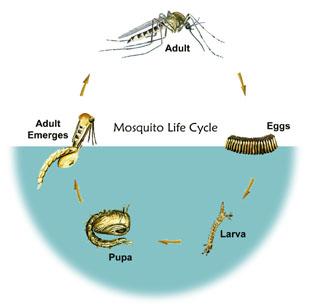
Eliminating Mosquitoes in your Environment
One of the most effective methods to control, prevent and eliminate mosquitoes in your environment is to disrupt their breeding cycles. The more you interrupt the mosquito’s breeding cycle, the fewer mosquitoes will be around to bite and transmit diseases. Perhaps one of the most cost-effective means of controlling mosquitoes in this way is source reduction. Source reduction is the removal or permanent destruction of mosquito breeding sites and involves the elimination of water from places where mosquitoes lay eggs. Mosquitoes need standing or stagnant water to breed; even an improperly disposed sachet of water with few inches of water is enough for the female to deposit her eggs and breed a significant number of mosquitoes in a short while. Other common mosquito breeding sites include rainwater barrels, waste tyres, indoor water storage, flower pots, ponds and marshes, discarded containers, bird-baths, puddles, heavily shaded areas, long grasses, poorly maintained pools, tree holes, lagoons, backwaters e.t.c.
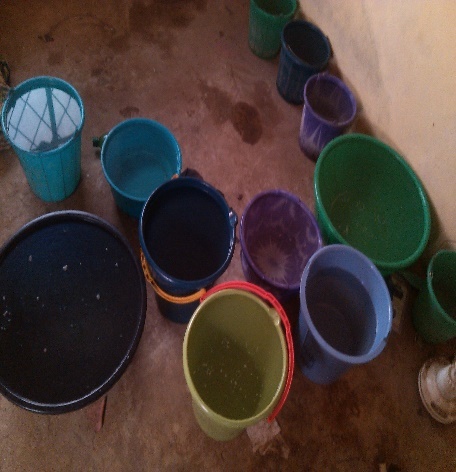
Therefore, by draining ponds and common breeding sites, and by keeping water out of natural and artificial containers, it is guaranteed that the mosquito population in your immediate environment will reduce drastically, and with consistent actions, eliminated. Every individual has an obligation to make sure our properties are free of mosquito-breeding sites and you can do this yourself in several ways;
- Cover rainwater barrels and indoor containers tightly: Barrels can be kept covered with a fine mesh fabric to prevent mosquitoes from getting through. You can also keep the barrel covered even when rain isn’t coming as a more permanent preventative measure. If covering isn’t an option, you can empty out your barrels within 24 hours of rain before larvae have a chance to hatch.
- Practice good pond mosquito control: Removing ponds might not be easy but it can be made less of a mosquito haven. Alternatively, you can add mosquito fish – also known as Gambusia affinis – to the pond. It is reported that a single fish can eat more than 200 mosquito larvae in 60 minutes.
- If you must have a Birdbath, make sure the water is running – Remember that mosquitoes do not usually breed in running water.
- Frequent cleanup: Daily or more frequent clean-up must be done to eliminate empty containers, debris or surfaces where still and stagnant water can be collected.
- Ensure good drainage and environmental sanitation: Make sure your gutters, pavements, flowerpots and grounds are well-drained and free of stagnant water. Avoid illicit dumping of refuse into gutters and other drainage systems as this may block water from running freely and create stagnant water that encourages mosquito to breed.
Furthermore, it is important to note that human impacts on the environment, including land development and climate change, are affecting mosquito habitats, breeding, and development. Some of these changes to the land, air, and water promote the transmission and spread of mosquito-borne diseases. By protecting natural environments and their ecological properties and processes, we can help protect ourselves from mosquito-borne diseases. This means that we can take advantage of the interrelated connectivity of our human, animal and environmental existence to protecting ourselves from mosquitoes and their infections using the One Health approach. This will be fully discussed in the next article in this series.
In the meantime, always remember that the simple rule – No Standing Water, No Mosquito – will not allow mosquitoes breed and will go a long way in preventing all mosquito-borne diseases of public health importance.
Idris Otun, the lead writer, is a Public Health Parasitologist and a Student Ambassador for the Royal Society of Tropical Medicine and Hygiene
Kikope Oluwarore, the contributory writer and editor, is a Public Health Professional and Freelance Writer



